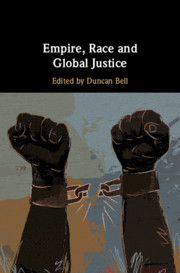We learned of an international colloquium on the abolition of slavery and the slave trade in Paris coming January.
Particulièrement attentatoire à la dignité de l’homme, au même titre que la torture, l’esclavage fait l’objet d’une prohibition relativement ancienne et d’une grande fermeté. Énoncée dans la convention de Genève relative à l’esclavage du 25 septembre 1926, la prohibition absolue de l’esclavage, quelles que soient les circonstances, est reprise dans l’ensemble des déclarations et conventions protectrices des droits de l’homme. Au sein des États, l’abolition est progressive.
Le Pakistan clôt, en 1992, un processus engagé deux siècles auparavant en 1777 (abolition de l’esclavage dans le Vermont). La réduction en esclavage, autrefois rouage de l’économie (traite négrière), est devenue un crime contre l’humanité (art. 7 Statut CPI).
L’esclavage institutionnel n’existe plus, mais il doit désormais être saisi dans sa réalité factuelle afin de lutter efficacement contre tous les trafics et toutes les formes d’exploitation ayant pour objet des êtres humains, hommes, femmes et enfants. Il perdure dans toutes les régions du monde y compris dans ses manifestations les plus archaïques comme en attestent les marchés aux esclaves en Libye et le traitement réservé aux femmes Yézidies par l’État islamique.
L’esclavage est non seulement une réalité contemporaine, mais il est également un amer souvenir de la conquête du monde et de la colonisation par les européens.
Quelles réponses juridiques, quels recours offrir aux victimes de cette pratique odieuse ? Quelle signification revêt ou devrait revêtir l’esclavage sans pour autant diluer la notion en l’appliquant à des situations licites dans certains États (notamment la gestation pour autrui) ? Quelle distinction opérer entre esclavage, servitude, travail forcé et traite ? Quelle valeur possède le consentement de la victime à son exploitation ? Comment affronter l’esclavage dans ses multiples modalités ainsi que dans ses dimensions spatiales et temporelles ?
L’esclavage est une pratique d’hier et d’aujourd’hui. Les plaies du passé peinent à cicatriser ; le ressentiment des descendants d’esclaves demeure vivace. Entre devoir de mémoire et réparation, comment assumer le passé ? Au présent, la lutte contre l’esclavage associe tant les États que les opérateurs privés, en particulier à travers le devoir de vigilance imposé à certaines entreprises multinationales afin d’éviter qu’elles n’entretiennent indirectement le phénomène par leurs filiales ou sous-traitants établis à l’étranger. Le colloque a pour ambition de réfléchir à ces différentes questions et aux réponses qu’elles sont susceptibles de recevoir.






